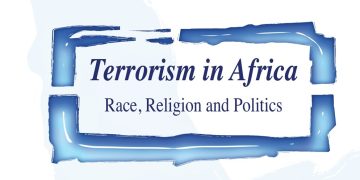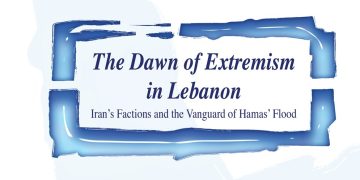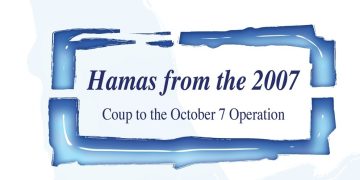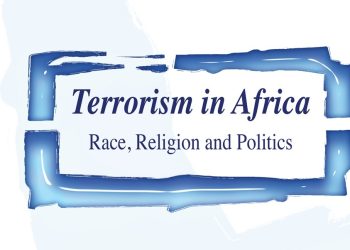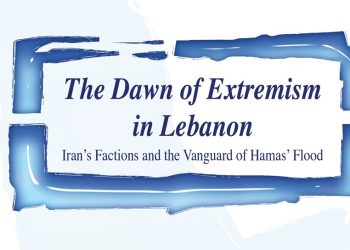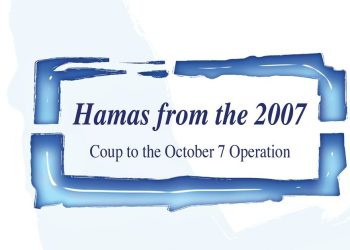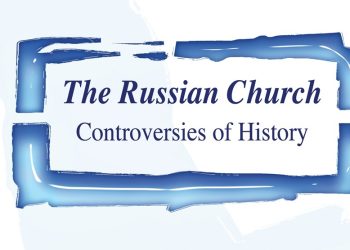Introduction
Since the 1930s, extremism has been an essential topic for the global community. Global leaders have undertaken various procedures, laws, and measures to curb the international spread of terror activities and their adverse effects. Terrorism entails committing crimes against humanity that results in mental and physical torture of the militias and civilians, destruction of private and public infrastructure, injection of fear, and harassment of the masses. Despite the adverse effects of terror activities, a rapid increase in terror groups has led to international peace and safety deterioration. Specifically, radical groups like Boko Haram, Islamic State, Al-Qaeda-linked assemblages, and other radical movements are central characters in the present-day lethal crises, confounding the determination to end them. These terror groups have caused state collapse, exploited wars, and led to geographical upheavals in the Middle East. Over the last few years, the extremist movements have gained new footholds in Africa and continue to threaten other countries worldwide. The terror groups also interact with the European splinter groups to enhance their capabilities and improve their probability of achieving the set objectives. Many radical groups in the Middle East describe overseas insurrections as a podium for their troops to accomplish advanced preparation through participation in real battle situations. The recent Russian-Ukraine crisis has created new opportunities for the training and recruiting of people to the Middle East terror groups based on ideological, religious, and political factors.
Foreign Terrorist Fighters
The recent globalisation and global interconnectedness have facilitated the movement of terrorists across the globe to commit attacks. The term foreign terrorist fighters first emerged in 2014 after the Security Council resolution 2170 to respond to the escalating terrorist activities in the Syrian Arab Republic and Iraq. The resolution disregarded the land laws in curbing terrorism and called on all the member countries to suppress the movement and movement of alien terrorist fighters. According to the Security Council, foreign fighters are people who travel across borders to accomplish a terrorist activity irrespective of whether the person engages in an armed battle. Unlike mercenaries, who engage in foreign fights on behalf of the state, foreign fighters engage in hostilities for private gains.[1]
Despite these descriptions, there is no standard definition of foreign terrorist fighters. These recruits emerge from different age groups, educational backgrounds, socioeconomic, and vocational backgrounds. Although many extraneous terrorist fighters are well educated and emerge from affluent families, many of their recruits are young and fiscally challenged males from governmentally and socially sidelined backgrounds.
Location of Opportunities in Foreign Battles by Terrorists
Mainly, terror groups take advantage of the mass recruitment of foreign fighters to expand its operation to new places and give the terrorists a neutral training ground. The United Nations Office on Drugs and Crime defines foreign troops as individuals who live in their home country or as customary residents to join hands with non-state armed groups in a weaponized fight abroad based on religious, ideological, and kinship concepts.[2] Many terror groups use armed warfare to train and even commit attacks. For instance, the 2008 Georgian and the 2014 Ukrainian conflict led to substantial spikes in terrorist activities across wars since the conflict intensified terror training and attacks. According to the International Crisis Group, the rise of Arab revolts in clashes and chaos produces enormous prospects for the terrorists.[3] As crises aggravate and progress, the rebel movements collect new powers of increased troops, currency, and weapons. Increasing hostility between nations intensifies violence and makes the states more concerned about the native rivals than the rebel groups, control the contest against terror groups, and silently humour them as alternatives. Specifically, in the Middle East, the region has witnessed a massive growth of the Jihadists due to global instability and radicalisation during crises, making them owe more to fighting between their enemies.[4] Thus, terrorism increases with increased conflict intensity in different parts of the world, enhancing foreign fighters’ needs.
Opportunities for Middle Terror Groups in the Russian-Ukraine War
There is a direct correlation between terror activities in any region and the emergence of national and international conflicts and wars. The recent Russian attack on Ukraine presented a significant opportunity for terror groups worldwide. For a long time, Ukraine has become a training ground, networking platform, and general hub for the far-right due to the conflicts witnessed in the region. According to Stanley-Becker and Makhennet, Russia’s war in Ukraine has intensified terror activities globally by creating new opportunities to plan and execute terror. Based on this report, the current war has spurred hard-liners from the armed Islamists who follow the breaches in Western supremacy to neo-Nazis who back paramilitary parties.[5] The war has exposed the extremist to advanced training, explosives, and weapons, which may adversely affect the world in the future. Like Afghanistan in the 1980s, Ukraine has become a favourable ground for the white supremacists and neo-Nazi’s training by giving them a real-world fighting experience.[6] The experience will adverse their mastery of the use of weapons, utilisation of technology for encryption and communication, planning attacks, and use of cryptocurrency to fund their criminal activities.
Scholars and media personalities have detected several terrorist activities ongoing within Ukraine after being attacked by Russia in early 2022. According to a report by Radio Free Europe, the German neo-Nazi group has taken advantage of the war to train with the Russian ultranationalist group at the camp near St. Petersburg.[7] Similarly, Ukraine has facilitated training of the Ukrainian battalions and the Right Sector. According to the Russian TV channel Zargrad, the country will send the trained soldiers to European countries and the Middle East, where they will engage in terrorist activities. For instance, in 2019, the members of the US Congress called the US State Department to label Azov as a foreign terrorist organisation. Due to the uneven attempts to rebuke the far-right radicalisms, Azov has received increased international support, and Ukraine has become the new hub for such extremism. According to Byman, terrorism is one of the enormous risks of foreign fighting.[8] Battalions defined as more competent and deadly have an enhanced probability of engaging in terror activities since conflicting zones expose people to radical ideologies and promote more networking. Overall, conflicts and wars create new opportunities for criminal activities for different terror groups worldwide, including in the Middle East.
Ukraine Insurgency and the Rise of Terror Groups
The Russian invasion of Ukraine cities, including Kyiv, has increased insurgency like the one witnessed by the Soviet Union in Afghanistan in the 1980s. As the battle between Russia and Ukraine continues to heighten and govern global attention, there is more extraordinary evidence from the Central Intelligence Agency that an increased insurgency in the region could pose more threats to Ukraine and countries beyond. The insurgence is likely to promote terrorism since foreign fighter from the US is likely to use the war to promote the transnational white supremacist network. According to Webb Whitney, the international system of white supremacist-allegedly with a group associated with the conflict in the Donbas region of Ukraine at its staple is to turn out to be the new Islamic State-Style threat.[9] Thus, with the increased Ukraine insurgency resulting from the conflict, there is a startling possibility that the crisis will serve as an inaugural action for the modern repetition of the never-ending war on terror.
With the rising insurgency resulting from the Russian invasion of Ukraine, Russia will face a bloody and lengthy insurgence that will blow out across numerous borders. This insurgency will have the ability to create widening global unrest and destabilize other countries through enhanced terror activities.[10] Besides, the involvement of the United States and their backing of the Ukraine revolt will increase the formation and actions of the Middle East terror groups, who strive to limit the spread of western ideologies. Insurgency leads to the rise of rebellious groups willing to organise and undertake acts of terror to achieve their specific objectives. The revolution will continue to create ample reserves for the fighters, reliable supply likens, and sanctuary over the borders can maintain itself indefinitely. Thus, the effects of the Ukraine insurgency match the 1980s CIA-backed revolts in Afghanistan and the moderate protestors in Syria since 2011.
Factors Influencing Joining of Foreign Conflicts
The root causes of violent extremism and engagement in foreign conflict are multifaceted, complex, and intertwined. These causes a link to the structural environment where violent extremism and radicalisation start in most cases. However, violent extremism emerges from social, economic, political, and economic circumstances, comprising global and regional power politics. Regardless of the cause of the joining the terror groups, the militias’ ideologies uphold supremacy to a specific group and oppose inclusive and more tolerant society. It is, therefore, essential to understand why people join these terror groups and their ultimate goals.
Perceived Injustice
Perceived injustice is the core motivation of terrorism worldwide and engagement in foreign conflicts. Revenge against the oppressor in the Middle East is an ancient tradition that entails a response to remediate and redress an injustice inflicted on another person or state.[11] In Kuwait, attacks from countries like Iraq led to bitterness, lower forgiveness levels, and an enhanced desire to revenge against the perceived transgressors. The transgression’s feelings make people join terror groups due to the perceptions of their justification to seek vengeance for the entire nation.[12] The injustices that come in the form of religious, economic, political, legal, and racial inequalities are the most driving forces behind joining terror activities. Dal Santo et al. defines injustice as a push factor that makes many people in the Middle East engage in terrorism.[13] Many of the perceived injustices emerged from racial discrimination, mistreatment by the law enforcement offices, and economic inequalities. Extremism driven by political dynamics unswervingly attaches to broad united responses against the apparent injustice or oppression, which may emerge from thrilling religious doctrine.[14] Overall, perceptions of injustice serve as grievances that act as the most significant precipitant cause of terrorism.
The injustices that the people are experiencing during the Russia-Ukraine crisis have caused many countries to cross borders and help Ukraine manage and respond to the Russian attacks. Indeed, Ukraine has received an outpouring of support from the global government, which considers the Russian aggression unjust and a violation of international humanitarian law. According to Byman, many European governments, America, Canada, and the United Kingdom, have sent their military aid to support Ukraine in its fight with Russia.[15] The support and willingness of the foreign soldiers to help Ukraine emerged from the perception that Russia’s invasion of the country was unlawful and unethical. Similarly, terror groups are using this war as a platform to fight perceived injustices and discriminatory treatment of specific groups of people. According to Byman, the crisis has led to an influx of zealous but untrained foreign fighters who are eager to combat martyrdom for the case of the jihadis.[16] The Azon Battalion, a paramilitary regiment, is one of the volunteers at the forefront of fighting for Ukraine. According to one of the organisations, the group volunteered to engage in the crisis since they had an urgent mission to lead the White races on the final path of their survival.[17] Thus, the drive to combat societal, political, and economic injustices is one of the main drivers of increased foreign terrorist fighters.
Religious Extremism and Fundamentalism
Many people join foreign conflicts on a religious basis. Specifically, many youths have reported religion as the primary driver of their move to join terror groups like IS, al-Qaeda, and Boko Haram and engagement in foreign conflicts. Scull et al. argue that religion forms a social bond that connects people with similar ideologies and paves the way for enhanced radicalization.[18] According to United Nations Development Program, religious extremists reject the notion of diplomatic existence between diverse faith-based groups, descent, and choice. Religious norms and expectations force the young population to engage in violent activities as a strategy to defend their faith.[19] Although the Islamic faith upholds peaceful relations, many terror groups pervert the Koran’s provisions to promote violence. The Salafist groups like IS, Al-Qaeda, and Boko Haram overlook the real meaning of the religious provisions and focus on war and violent coexistence. The probability of an individual joining a terror group depends on the perceived and fueled anger towards religious injustices since religious extremism begins with extreme openness to new religious ideologies that change a person’s view of the world.[20] The altered world’s opinion encourages people to participate in activism due to the improved recognition of extreme customs like violence. The illogical thinking and trust in the groups’ inclination and entitlements. Thus, religious conviction is a significant push factor to joining radical groups since it eases the use of non-normative approaches like intensity to achieve the desired goals.
The use of religion to encourage people to join violent extremism was evident in present Ukraine and Russian crises. While speaking to MEMRI TV, a Turkey-based Egyptian Brother, Dr. Yasser AL-Naggar, argued that the Muslims had the freedom to join any of the two conflicting states.[21] According to his arguments, both Russia and Ukraine are all combatant infidels who fight the Islamic faith. The engagement of the Muslim states in the war would enable them to receive rewards due to killing infidels or dying as a martyr. To him, the Islamic groups had the freedom to support either Russia or Ukraine in the combat, provided they spread Allah’s word and perpetrate damages upon the infidels. Such reasoning and interpretation of the Koran lay the basis for the involvement in violent extremism in the Middle East. According to Frissen et al., electronic platforms and jihad allow terror groups to utilize the Koran and additional Islamic verses in a cherry-picked and condensed matter to develop and spread exaggerated and false Islamic versions.[22] For instance, Dr. Yasser AL-Naggar took advantage of Koranic blank verses in Daqib, namely Ayat 194 and 217 from Sura 2, highlighting the legitimate framework for instigating war and the justification of assassination in defense of the recent “Crudasaiders of the West.” Daqib frequently maintains that fighting non-Muslims is justified and a spiritual responsibility that all Muslims should undertake.[23] Although jihad is a religious ideology, terrorists misconstrue and wrongly use it to support modern terrorism. This understanding of the Koran increases the desire for extreme Muslims to join terror groups as a strategy to fight for their faith and religion.
Altogether, foreign terrorist fighters engage in foreign conflicts since they perceive crisis as a just war where they have a substantial role to play. According to The United Nations Office on Drugs and Crime, many foreign fighters perceive their duty to defend Islam and protect all Muslims while gratifying the spiritual call to embark on hijra and engage in a holy battle.[24] Hijra originally meant the migration of Prophet Muhammad but has since then adopted a different meaning to allow ISIL and Al-Qaeda to transport arms and migrate to undertake jihad while defending the Islamic religion.[25] For instance, ISIS uses the brutal beheading of Americans as a propaganda tool to entice the terrorists, a move that has seen an upsurge in the number of young men and women from Europe, the Middle East, Africa, and beyond signing up to join the movement. These religious beliefs increase the interests of the foreign terrorist fighters to move to conflicting areas to defend their religion and meet the set religious requirements.
Social-Economic Marginalization
Social marginalisation makes some societal members feel disconnected from the broader community and face an enhanced ability to engage in terrorism and foreign terrorist fighting. In Kuwait, people from low socioeconomic backgrounds had an improved ability to engage in armed political violence instead of their counterparts from well-off families.[26] Similarly, lower education levels and attainment placed the societal members at a greater risk of undertaking foreign fighting missions. For instance, Abduulmuttallab, commonly known as the underwear bomber, emerged after posting about his life issues and inability to meet his social-economic needs. The “underwear bomber” published, “I do not have a friend, no one to speak to, no one to consult, no one to support me, and I feel depressed and lonely. I do not know what to do.”[27] The experienced social and economic challenges made it easy for the Al-Qaeda group to radicalise the Nigerian-born terrorist. The underlying causes of engaging in terrorism include; poverty, economic or political marginalization, unemployment, discrimination, and high illiteracy levels.[28] Thus, social and economic factors serve as push factors towards the radicalisation of the socially and economically marginalised groups.
Despite the enhanced academic attainment in the Middle East and North Africa, these regions experience high unemployment rates, which enhanced the population’s drive to engage in foreign conflicts. The deficiency and socioeconomic instability create unhappiness and anger, factors that make people have an enhanced desire to join terror groups and cross borders to accomplish criminal objectives (Dawoody 80). Specifically, joining extremist groups and engaging in foreign conflicts comes with greater financial reimbursements, which attract the unemployed and economically marginalized populates. For instance, Dawoody (81) argues that ISIS gives close to $6000 to young unemployed youths and a monthly reimbursement of $1200, which imposes their religious and political agenda. Many terror groups take advantage of the high unemployment rates in the region, where they vision overcrowded cafes to recruit emotionally and financially frustrated youths. Even for the educated and middle-class youths, the lack of a favorable job market has enhanced their support for the radical groups. Besides, the repressive regimes deny the youths a platform to express their expectations and ideologies in the political realm.[29] In sum, the decision to join radical organisations and adopt radical discourses is joint for unemployed, underemployed youths with fewer learning opportunities.
Radicalisation and New Collective Identity in the Middle East
The Middle Eastern region faces unstable political, economic, and social issues, making neo-kharijism gain relatively high support levels in the Muslim world within a short span. Terrorism in the Middle East is a product of anger that developed into a grudge against the arrogant and dominant Western states, especially the US.[30] The perceived injustices within the region and the casting on other people generate anger, creating a sense of collective identity, which lays the ground for the effective radicalisation process and emergence of different extremist groups. Specifically, members of the terror groups serve to have a standard view about social injustices and the need to take responsibility to restore normalcy. The radical groups within the Middle East form the collective identity at the micro-level based on the emotional experiences of the unjust and mutual fate. Contrarily, these groups use mass communication at the macro levels to structure a collective action. The Middle East has a well-defined and established collective identity that makes it easy for radical groups to radicalise youths and send them to fight in foreign conflicts.
Collective Identity In the Russian-Ukraine War
The presence of foreign terrorist fighters in Ukraine will enhance the formation of terror groups after the war based on the collective identity of the involved soldiers. The ongoing battle between the two countries can improve the appearance of a common identity that offers support to a specific group of political ideologies and opposes the other. While exploring the issue from the lens of the Afghanistan war of the 1980s, it is evident that conflicting zones open new platforms for terrorists to form similar identities and create groups that uphold their ideologies and agendas. According to Kavrakis, IS and Al-Qaeda, the world’s most prominent Salafist-jihadist groups, use the common identity and religious ideologies as an effective tool in terrorist mobilization.[31] For instance, even after the withdrawal of the Soviets from Afghanistan, the logistical network dissolved, but the militias continued to use the collective identity to oppose leaders. Hence, the Ukraine and Russian conflict create a breeding ground for future terror groups due to shared ideologies.
Benefits Accrued by Terrorist Groups from Engagement in Foreign Conflicts
Favorable Platforms for Creating Terror Groups
Training and fighting in the field of jihad transform the tactics and experience possessed by the terror groups. According to Thomas Hegghammer, a director of terrorism studies at the Norwegian Defense Research Establishment, many Al-Qaeda militias began their terrorism careers as volunteers in foreign conflicts.[32] Based on his report, many of the current transnational jihadi groups are products of overseas fight mobilization. Specifically, these foreign wars give the volunteers a sense of focus and mission to help them establish a sense of pride and mutual loyalty shared by a group of people, which is a common feature of radical groups. The brutal combats in the foreign fighting grounds harden the militias and make them perform effectively under pressure, and give them a sense of loyalty to their comrades. Most importantly, the conflicts equip the fighter with practical and immediate skills like the use of weapons, advanced technology, and urban warfare.[33] Thus, engaging in foreign combat enhances the ability of the terrorists to use sophisticated weapons, organise successful attack plots, and strengthen their overall lethality.
An excellent example of how foreign fighters become terrorists is apparent in the event of Afghanistan, which led to the rise of the Al-Qaeda group. Immediately after Hillary Clinton confessed to the state’s accountability for the emergence of mujahedeen against collectivism and consistent backing for the Taliban, the soldiers in Afghan began to form the Mujahidin force. The war comprised many Arab fighters who came to help their Afghanistan counterparts win the war. Osama bin Laden was one of the fighters who had traveled from Saudi Arabia to support the mujahedeen against the fight with the Soviet Union. However, while setting up distinct training camps for the Arab-Afghan Mujahedeen fighters, Osama suggested forming a novel group of the Global Jihad, the Al-Qaeda group.[34] According to Osama bin Laden, “To counter these atheist Russians, the Saudis chose me as their representative in Afghanistan. I settled in Pakistan in the Afghan border region. There, I received volunteers from the Saudi Kingdom and all over the Arab and Muslim countries. I set up my first camp where Pakistani and American officers trained these volunteers. The weapons were supplied by the Americans, the money from the Saudis. I discovered that it was not enough to fight in Afghanistan [alone], but that we had to fight on all fronts, communist or Western oppression.”[35] The Afghanistan war created a favorable group for the formation of Al-Qaeda, which remains a deadly terror group.
Enhanced Training and Testing of Weapons
Additionally, volunteering in foreign wars like the one in Ukraine facilitates sharing ideas and forming closer ties. According to Byman and Jeremy, some radical groups like Al-Qaeda have meticulous records to decide whom to relate to and work with and the people they wish to radicalise and train after the foreign conflict.[36] The conflicting zones serve as training grounds and networking platforms for overseas extremists. The radical groups use the skills acquired on these battlefields to enhance their operations and launch more attacks on the targeted nations. For instance, the mujahidin war in Afghanistan led to the formation of Al-Qaeda, leading to the execution of different terror attacks.[37] Nearly after the overseas battalions, regularly known as Afghan Alumni, completed the war and returned to their nations of origin, others continued with the radical activities. The Al-Qaeda leader Osama bin Laden took advantage of the instability in Afghanistan to offer training camps for the fighters. The incident led to the 9/11 terrorist attack in the US, resulting in massive casualties.[38] Thus, the conflicting zones give the terrorists training ground and the freedom to explore different weapons and technology to achieve their radical goals.
Networking Sites and Platforms
Although the soldiers volunteer as individuals, the war zone creates good networking sites and platforms. Specifically, the extremists establish robust networks that allow them to seek assistance in attack execution or the decision-making process. For instance, the mujahidin war in Afghanistan created a global rebel society supplied with financing networks, integrity, and combat zone proficiency.[39] ISIS and Al-Qaeda have also taken advantage of the recent civil wars worldwide to establish networks of supporters willing to give material support, financial incentives, and help in the coordinated attacks against the state. According to Walter, many people embrace Salafi jihadism due to the pre-established networks created by Al-Qaeda groups and financed by the global superpowers.[40] For instance, in the Iraq war of 2001, Zarqawi’s Sunni rebel group partnered with Al-Qaeda as a strategy to access Al-Qaeda’s network of operational expertise, private gulf financers, and recruitment mechanisms. Even after the movement of the Al-Qaeda group to Sudan in the early 1990s, the group conventional interactions with some potential radical groups across North Africa and the Middle East, which assembled extremist figures and radicals. [41]Altogether, war zones create a mutual platform for terror groups to establish mutual relations and promote their functionality in the future.
Proliferation of Weapons
Conflicting zones also create a suitable channel to move and distribute deadly weapons. According to a US report, Iran uses the region’s political instability to support radical groups and promote terrorist activities. Based on the report, Iran supports the terror groups in the Middle East by giving them weapons, training, monetary resources, equipment, ideological guidance, and logistical assistance. Likewise, Iran supports all radical groups opposing the presence of the US in Iraq. Specifically, they are offered antiaircraft weapons, improvised explosive devices, rocket-propelled grenades, mortars, and rockets.[42] The country also actively engages in the planning and executing terror attacks in the Middle East and offers the soldiers a haven to train and increase weapons. Iran mainly conveys the weapons to radical groups in the Middle East as a strategy to show their status and power to the US and the affiliated states. The disagreements between the US and the Iranian government and ideologies create a gap that the terror groups use to achieve their objectives. These regions could form these partnerships and trade agreements only through engagement in foreign wars.
Benefits of Russia-Ukraine Conflict to Middle East Terror Group
Like in other scenarios, the current crisis between Russia and Ukraine will give the Middle-East terror group an enhanced training grounds where they can freely try out new weapons and radicalise members due to the perceived injustices. Besides, the terror groups can use the conflict to create robust networks which they can use in the future to achieve the group goals and have enhanced access to human resources and weaponry. The war between the two countries poses an enhanced probability of forming new and dangerous terror groups in the case of radicalisation in the region, like what happened in Afghanistan in the 1980s.[43] The decision by the western countries like the US, UK, and other European countries to join in the conflict enhances the risk of radicalising international militias and the probability of undertaking global terror attacks. Thus, the engagement of the foreign fighters in the Russia-Ukraine battle is a replica of the 1980s occurrence. This event led to the emergence of the Al-Qaeda group and laid the foundation for the 9/11 attack.
The Impact of Foreign Perceptions Gained by Middle East Terrorists and Future Involvements
Returning of alien terrorist battalions poses a substantial hazard to national peace and safety. One probable outcome of not undertaking effective prosecution and repatriation processes is that these fighters engage in terror activities, which may go undetected in their relocated countries. For instance, the foreign terrorist fighters in Ghana pose a growing and urgent threat to global peace and refuge.[44] Their undertakings enhance conflicts’ duration, power, and volatility and pose a severe threat to the country of origin, countries they transit to, and neighboring states of armed conflict where the terror groups remain active. Similarly, in the Middle East, many returnees possess a disillusioned perception that makes them lose interest in engaging in armed conflict. However, their exposure to battlefield experience, extreme violence, and sophisticated training make a small number of the returning foreign terrorist fighters pose a significant threat to intercontinental harmony and security. For instance, many of the terrorists returning from Iraq and Syria went back to their homes, where they ended up becoming local fundraises, fighters or establishing local recruiting networks.[45] For instance, Saudi Arabia is one of the countries that has experienced numerous attacks from the returning terrorists in Iraq and Syria. For example, returnee Tareq al-Maimoony and his colleagues from the al-Monasaha program, a national prison de-radicalisation program, were responsible for the attack on the Shiite mosque in al-Daloh in 2014.[46] Hence, the foreign fighter terrorists’ changed perceptions compromised domestic and international security.
International governments fear that the movement of the foreign fighters in conflicting zones enhances the radicalisation process and the acquisition of the capabilities to undertake terror activities. Specifically, learning how to use complicated weapons and explosives, utilize other advanced techniques like suicide bombings or beheadings, and establish robust networks, enhances their ability to carry out future attacks. Even in the conflicting zones, foreign fighters engage in severe misconduct and promote the usage of terror activities in their respective wars.[47] For instance, in the video released by the Islamic State, the evidence showed the foreign fighters using sophisticated weapons to carry out the mass murder of Kurdish and Syrian soldiers and Ethiopian and Coptic Christians. The war or international conflicts gives the terror groups and foreign fighters a platform to try out new weapons, which increases the terrorists’ capabilities to carry out radical assaults in their native countries.
Al-Qaeda is an example of a deadly group formed by foreign fighters that continues to compromise national and international security. Over the past 25 years, foreign fighters have orchestrated and conducted many of the most significant jihadist attacks. For instance, these overseas fighters have helped organise the 1998 al-Qaeda attacks on the African-based US embassies and the al-Qaeda bombings of 2004 in Spain, the Paris bombings and shootings in 2015, and the 9/11 attacks.[48] As opposed to local fighters, foreign fighters have enhanced skills and expertise to carry out successful terror attacks after returning from the foreign battlefields. According to Hegghammer Thomas, these attacks succeed due to the improved ability of the soldiers to make bombs, hide from the investigative bodies, and successfully plot terrorist attacks.[49] Even in the absence of specialized training, the experiences on the battlefields make the foreign fighters more steady and dedicated to plotting successful attacks. Thus, foreign fighters led to a poor national and international security state due to enhanced training, more established networking, and collective identity formation.
As the battle between Russia and Ukraine endures to evolve, the domain is facing a pressing and complex challenge to respond to the return of foreign militias effectively. Given the current scope and scale of this wave of foreign fighters and the conflict’s nature, there are increased concerns that some of these returnees may come home intending to engage in violent activities.[50] As if resonating with the occurrences of the Spanish Civil War, when many of the unwavering foreigners engaged in fighting fascism, the Ukraine-Russia conflict has begun attracting extraneous undertakers ready to guard Ukraine’s constitutionally elected regime.[51] The conflict between Russia and Ukraine will create a breeding space for terrorism activities and compromise domestic and international security. Specifically, the higher probability of engaging in terror activities emerges due to the foreign fighters’ grievances towards their government and the imposition of radical ideologies on the idealistic foreigners. For instance, with the invitation of foreign investors in 2014, foreign fighters involved in the conflict have engaged in terrorist activities like the attack on the Christ Church in New Zealand. The emergence of the Russian-Ukraine clash is likely to exacerbate the Middle East terror activities. With more than 16,000 foreign fighters have signed up to take up arms and defend Ukraine against the Russian attacks, there is an increased risk of more emergence of jihadist movements across the realm and recruitment of militias worldwide. Thus, as Ukraine draws more foreigners into the current conflict, the returnees of the foreign soldiers after the crisis would mean an increase in terror activities in the Middle East and across the real.
Implicit and Explicit Brainwashing in Foreign Conflicts
Fact that many people decide to engage in foreign conflicts for political, persecution, and peer-pressure aspects, many of these people get brainwashed to join different terror groups. Young men and women, who went as foreign fighters to train with the Islamic State and returned to their homeland, are responsible for the recent terrorist attacks.[52] Differently, other people abandon their land to join terrorist groups, which poses a significant threat to the local societies if they survive and return. Jihadists use the brainwashing strategy to recruit more members to their group and radicalise them to share common goals and objectives. Radicalisation is a two-sided procedure that entails a person pushing the meta-narrative and another person agreeing to receive the meta-narrative by relating to and adopting the sold ideology.[53] Contrarily, brainwashing is a one-sided effort, where an individual is radicalised, and those non-consenting receive psychological manipulation to conform to group ideologies.[54] Thus, brainwashing indicates an individual loss of control, self-determination, and agency over personal choices.
Brainwashing is a prominent strategy used by terror groups to recruit foreign fighters and force many troops to join the radical groups. The interactions on the battlefield and other pre-existing factors led to the lapse of judgment of the foreign fighters, thereby increasing the number of people willing to join the radical groups.[55] Many of the foreign fighters who join terror groups are a product of effective brainwashing by the leaders and recruitment teams of the terror groups. According to Diez Alberto, the terror groups mainly use brainwashing to recruit foreign fighters in different terror groups. According to his findings, 60% of the Jordan fighters in Iraq or Syria remained on the battlefield longer than expected[56]. They lived under the strict application of personalized sharia during this time and became martyrs.[57] Daesh had successfully brainwashed the foreign fighter to believe in the caliphate they had created and their role in expanding to other countries. Terror groups like the Islamic state use different strategies to brainwash foreign fighters and recruit them to different terror groups. In the war zones, the Middle East-based terrorists Al-Qaeda and ISIL deliberately use propaganda to reach and brainwash foreign fighters, especially those disillusioned or wrestling with their identity.
As in the case of Russia and Ukraine, conflicting zones create a favorable ground for brainwashing and recruiting more members of the terror groups. For instance, Osama formed a global Jihad group in Afghanistan and brainwashed foreign fighters to join the establishment. According to Bin Laden, the group intended to counter the atheist Russians and protect Islam. This ideology brainwashed the soldiers’ thoughts and recruited many militias from Sudan, the Middle East, and other countries in North Africa.[58] Osama himself was also a product of brainwashing. In an interview with his family, the family narrated Osama’s transformation from a zealot to a global jihadist. According to his mother, Osama was a product of brainwashing in his early 20s. Alongside his peers, he began to engage in the form of cult, in which they got money for their cause. An article published in Egypt Daily mentioned Abdullah Azzam, bin Laden’s Palestinian Mentor, as the main person who brainwashed Osama and convinced him of jihadism.[59] According to the interview with her mother, Azzam had managed to alter Obama’s thoughts and convinced him to engage in the 1980s holy war against the Soviets in Afghanistan. The Sayed Qutb highly influenced Azzam, making him a leading figure and an essential member of the al-Qaeda group, where he continued to brainwash young men and women to participate in the Afghanistan war. His saying “Muslims must be terrorists” made him brainwash many foreign fighters, including Osama bin Laden.[60] His relocation to Afghanistan in the 1980s enhanced the brainwashing ideas and made Osama more radical, an occurrence that led to the emergence of the al-Qaeda group. Based on these reports, it is evident that the current crisis between Russia and Ukraine creates a good platform for the Middle East terror groups to brainwash foreign fighters worldwide and make them more radical.
Ancillary Issues faced by Foreign Fighters
Radicalisation changes the objective of the foreign fighters and changes the focus to the engagement in violent extremism. Although some foreign fighters engage in this mission as a strategy to restore global peace, the radicalization process changes their commitment to this mission. Instead, they start pursuing different goals and tasks. By the second phase of the radicalisation process, the foreign fighters begin to show some form of group membership which distracts them from the primary goal and objectives. Indeed, at this stage, the person feels some form of attachment and fuses with the group, making them strive and show their loyalty to the radical group other than their mission as foreign fighters.[61] Thus, the soldiers begin to follow the established group values and norms, for instance, downgrading non-group members publicly. By the third phase of radicalisation, the foreign fighters begin undertaking violent actions as directed by the terror groups. Thus, the radicalisation process is a lengthy process that slowly changes and distracts the foreign fighters’ focus from the peace restoration mission to the engagement in violent activities under the radical groups due to the strengthened ties.
Personality Traits of Terrorist Fighters
Although there are no common personality traits for all the terrorists, many of these fighters tend to be lone wolves, also known as sole actors, who identify the cause and plan an attack without institutional training and control. A lone wolf is a personality trait closely related to individualism and a deep yet, at times dangerous, quest for self-search.[62] Due to the extremity linked to these personality traits, people tend to possess greater hatred for anything that does not identify with. The lone wolf phenomenon entails a group of independent terrorists who perpetuate attacks without any operational involvement, guidance, or organisational support from terror groups.[63] Posluszna Elzbieta defines the traits of lone wolves using reliable psychological concepts.[64] According to him, lone wolves are a psychological disorder that shares similar features with narcissism and aggression. This psychological disorder entails the damage to the personal image and the damage outcomes of the inability to meet the expectations set by the desired behavioral standards and ego. Besides, the concepts of resentment theory argue that resentment is a mix of hateful emotions like lust for revenge, jealousy, and envy.[65] Lone wolves acquire motivation from different radical groups and see themselves as operatives even without recruitment, training, payments, or help from the said organisation. Similarly, after successful lone-wolf attacks, some terror groups tend to claim responsibility for the attack as a strategy to enhance their position and gain free glory. Thus, people with lone wolf personalities have more significant depreciation that violates the sense of personal worth and safety, which makes them operate outside the law to have the work done.
Lone wolf attacks emerge from a wide range of religious, political, and ideological reasoning that enhances the individual desire to seek revenge. Scholars group the significant motivations of lone-wolf attacks into three major groups, namely psychopathological, ideological, and other personal circumstances.[66] Every attacker combines a unique combination of these features, attributes that differ from one individual. For instance, lone wolves might attack due to ideological motives, including, among other things, devotions, political purposes, and other radical ideologies. Contrarily, the personal motivations of lone wolves include acute economic crisis, poverty, low socioeconomic status, relationship or interpersonal issues, desire for adventure, status improvement, and domestic matters. Mental instability, belief in the afterlife, despair, and harrowing experience enhance the person’s willingness to commit suicide, which implies the psychological motives of lone wolves. A decision by a lone wolf to attack depends on one primary reason or a combination of psychological, personal, and ideological motives.
Lone wolf attackers express their outrage that the world is physically and morally declining and project their dissatisfaction on a particular group by blaming them for the community’s perilous state. Lone wolf terrorists have diverse ideological and motivational narratives, with makes them attribute different causes and reasons for the world decay. Besides, the sociopolitical and personal grievances influence the terrorists’ selection of the enemy. For instance, the London nail bomber, David Copeland, found it necessary to trigger a race war since he blamed his inability to secure stable employment on the increased number of immigrants.[67] Thus, lone-wolf terrorism depends on different motives based on the terrorists’ demands and experiences.
The Danger of Recruitment by the Muslim Brotherhood
Recruitment by the Muslim Brotherhood is dangerous and defines terrorism as a call in the religion and compromises international peace and security. Hassm and Liwaa el-Thawra are some terrorist groups formed by former Brotherhood members that continue to target the police in Cairo and Upper Egypt.[68] These terror groups have led to massive deaths of besieged regime officials and policemen, including the anterior Egyptian Grand Mufti, whom they attempted to kill for allegedly being in cahoots with the government. The founder of the Muslim Brotherhood noted that “Jihad is an obligation from Allah and every Muslim and cannot be ignored nor evaded,” indicating that the movement was a militant from the beginning.[69] The recruitment in the Muslim Brotherhood creates a real threat to the countrywide safety benefits of different states across the world. For instance, Hassm and Liwa al-Thawra continue to engage in violent activities within Egypt. Indeed, the institutions continue to perpetuate the killing attempts on Egyptian guard and safety officials and bombings alongside administration sites. Ultimately, enhanced recruitment within the Muslim Brotherhood increases the global security threats and is likely to cause massive deaths of people worldwide.
Conclusion
Overall, the volunteering of the foreign fighters to help Ukraine fight against Russia will make Ukraine a mirror image of Afghanistan. Specifically, the present review of the existing literature indicates that conflict regions and war zones create a neutral ground for the terror groups to undertake their activities and undergo more training. Indeed, the Ukraine-Russian conflict establishes a platform where the terror groups can proliferate sophisticated weapons, receive enhanced training, try out new weapons, and establish more networks with other foreign fighters. Similarly, the battles create an avenue for acquiring sophisticated weapons for use in their home countries. Besides, the conflict might lead to new radical groups, as it was in the 1988 Afghanistan war that led to the emergence of a deadly al-Qaeda group. The return of the foreign fighters also poses a threat to national peace and security and enhances the radicalisation process and the acquisition of the capabilities to undertake terror activities. Specifically, while in the war zones, the jihadists brainwash the foreign fighters to recruit more members to their group and radicalise them to share common goals and objectives. Besides, lone-wolf terrorists can also take advantage of the ongoing crisis to implement their revenge against the perceived enemy. Thus, the current Russian invasion of Ukraine is likely to exacerbate terrorism activities and create a replica of the terrorist occurrences in Afghanistan in the 1980s.
[1] The United Nations Office on Drugs and Crime. Foreign Terrorist Fighters Manual for Judicial Training Institutes South-Eastern Europe. United Nations, 2019
[2] The United Nations Office on Drugs and Crime, p.3
[3] The International Crisis Group. Exploiting Disorder:al-Qaeda and the Islamic state. Crisis Group Special Report, 2016
[4] The International Crisis Group, p.6
[5] Stanley-Becker, Isaac and Makhennet Souad. Russia’s war in Ukraine galvanizes extremists globally. Washington Post, 2022
[6] Stanley-Becker, Isaac and Makhennet Souad, p.4
[7] Disinfo: Ukraine trains terrorists for European and Middle East operations. (2018, February 22). Sputnik Germany. https://euvsdisinfo.eu/report/ukraine-trains-terrorists-for-operations-in-europe-and-the-middle-east
[8] Byman, Dan, and Jeremy Shapiro. “Be Afraid, Be a Little Afraid: The Threat of Terrorism from Western Foreign Fighters in Iraq and Syria.” Policy Paper 34 (2015).
[9] Webb Whitney. Ukraine and the new Al Qaeda. The Last American Vagabond. 2022. https://mronline.org/2022/03/10/ukraine-and-the-new-al-qaeda
[10] Webb Whitney. Ukraine and the new Al Qaeda. The Last American Vagabond
[11] Scull, Nicholas C., Othman Alkhadher, and Salman Alawadi. “Why people join terrorist groups in Kuwait: a qualitative examination.” Political Psychology, vol.41, no.2, 2020, pp: 231-247. https://doi.org/10.1111/pops.12622
[12] Scull, Nicholas C., Othman Alkhadher, and Salman Alawadi. P.3
[13] Dal Santo, Elena, and Elizabeth Johanna van der Heide. “Escalating complexity in regional conflicts: Connecting geopolitics to individual pathways to terrorism in Mali.” African security, vol.11, no.3, 2018, pp: 274-291.
[14] Wibisono, Susilo, Winnifred R. Louis, and Jolanda Jetten. “A multidimensional analysis of religious extremism.” Frontiers in Psychology, 2019, p: 2560.
[15] Byman, p.2
[16] Byman, p.5
[17] Farley Robert. The Facts on ‘De-Nazifying’ Ukraine. Factcheck Posts, 2022. https://www.factcheck.org/2022/03/the-facts-on-de-nazifying-ukraine/
[18] Scull et al., p.5
[19] UNDP. “Preventing violent extremism through promoting inclusive development, tolerance, and respect for diversity.” UNDP, 2016.
[20] Wibisono et al., p.2
[21] MEMRI TV. Muslim Brotherhood Scholar: Muslims Are Allowed to Join Either Side of the Russia-Ukraine War. 2022. https://www.youtube.com/watch?v=HtLdLFq4cPw
[22] Frissen, Thomas, et al. “Capitalizing on the Koran to fuel online violent radicalization: A taxonomy of Koranic references in ISIS’s Dabiq.” Telematics and Informatics, vol.35, no.2, 2018, pp: 491-503.
[23] Frissen, Thomas, et al., p.496
[24] The United Nations Office on Drugs and Crime, p.6
[25] The United Nations Office on Drugs and Crime
[26] Scull et al., p.3
[27] As cited by Scull et al., p.3
[28] The United Nations Office on Drugs and Crime, p.23
[29] Dawoody, Alexander R., ed. Eradicating terrorism from the Middle East: Policy and administrative approaches. Vol. 17. Springer, 2016.
[30] Dawoody, p,2
[31] Kavrakis, Konstantinos. “Identity and Ideology through the Frames of al-Qaeda and Islamic State.” Terrorism and Political Violence (2022): 1-18.
[32] Byman, Dan, and Jeremy Shapiro. “Be Afraid, Be a Little Afraid: The Threat of Terrorism from Western Foreign Fighters in Iraq and Syria.” Policy Paper 34 (2015).
[33] Byman and Jeremy, p.5
[34] Jahangir, Asifa, and Prof Dr Umbreen Javaid. “Afghanistan Imbroglio: The Unintended Consequences of Foreign Interventions.” South Asian Studies 33, no. 2 (2020).
[35] Jahangir, Asifa, and Prof Dr Umbreen Javaid. ” p.418
[36] Byman and Jeremy
[37] The United Nations Office on Drugs and Crime, p.13
[38] Ibid p.13
[39] The United Nations Office on Drugs and Crime
[40] Walter Barbara. The extremist’s advantage in civil wars. International Security, vol.42, no.2, 2017, pp:7-39
[41] Jahangir, Asifa, and Prof Dr Umbreen Javaid.
[42] Reeson, Greg C. Stalemate: Why We Can’t Win the War on Terror and what We Should Do Instead. Government Institutes, 2011.
[43] Byman and Jeremy
[44] The United Nations Office on Drugs and Crime. Developing an effective response to foreign terrorist fighters in Ghana. 2020 https://www.unodc.org/westandcentralafrica/en/2020-11-04-ghana-foreign-terrorist-fighters.html
[45] Ragab, Eman. “Returning foreign terrorists: What type of security challenges are they posing.” Mediterranean Yearbook (2018): 87-93.
[46] Ragab, Eman, p.6
[47] Reed, A. G., Johanna Pohl, and Marjolein Jegerings. “The four dimensions of the Foreign Fighter threat: making sense of an evolving phenomenon.” International Centre for Counter-Terrorism Policy Brief 8, no. 1 (2017).
[49] Hegghammer, Thomas. “Should I stay or should I go? Explaining variation in Western jihadists’ choice between domestic and foreign fighting.” American political science review 107, no. 1 (2013): 1-15.
[50] Holmer, Georgia, and Adrian Shtuni. Returning foreign fighters and the reintegration imperative. Washington, DC: United States Institute of Peace, 2017.
[51] Fink, Naureen and Clerke, Colin. Opinion | Foreign Fighters Are Heading to Ukraine. That’s A Moment for Worry. Politico Pro. 2022. https://www.politico.com/news/magazine/2022/03/10/foreign-fighters-are-heading-to-ukraine-thats-a-moment-for-worry-00016084
[52] Gurski, P., 2016. Western foreign fighters: The threat to homeland and international security. Rowman & Littlefield.
[53] Chassman, Alyssa. “Islamic State, identity, and the global jihadist movement: How is Islamic State successful at recruiting “ordinary” people?” Journal for deradicalization 9 (2016): 205-259.
[54] Chassman, Alyssa. Islamic State, identity, and the global jihadist movement: How is Islamic State successful at recruiting “ordinary” people?”
[55] Ibid, p.232
[56] Diez, Alberto Caballero. “Jordanian foreign fighters in Syria and Iraq: how did they become radicalized and how they can be de-radicalized?.” Spanish Institute for Strategic Studies, July 7 (2016).
[57] Diez, Alberto Caballero. “Jordanian foreign fighters in Syria and Iraq: how did they become radicalized and how they can be de-radicalized?.” Spanish Institute for Strategic Studies, July 7 (2016).
[58] Jahangir, Asifa, and Prof Dr Umbreen Javaid, p.418
[59] Chulove, p.10
[60] Egypt Today. Abdullah Azzam, the man behind bin Laden’s Jihadism. 2018. https://www.egypttoday.com/Article/1/55342/Abdullah-Azzam-the-man-behind-bin-Laden%E2%80%99s-jihadism
[61] Doosje, Bertjan, Fathali M. Moghaddam, Arie W. Kruglanski, Arjan De Wolf, Liesbeth Mann, and Allard R. Feddes. “Terrorism, radicalization and de-radicalization.” Current Opinion in Psychology 11 (2016): 79-84.
[62] Korstanje, Maximiliano E., and Babu George. “Terrorism and the Allegory of the Lone Wolf: From 9/11 to COVID-19.” In Mobility and Globalization in the Aftermath of COVID-19, pp. 95-115. Palgrave Macmillan, Cham, 2021.
[63] Ganor Boaz. Understanding the Motivations of “Lone Wolf” Terrorists. Perspectives on Terrorism,vol.15,no.2, (2021)
[64] Posluszna, Elzbieta. “Lone Wolf Terrorism–A Socio-Psychological Approach.” Safety & Defense 1 (2020).
[65] Ibid, p.116
[66] Ganor Boaz, p.26
[67] Alfaro-Gonzalez, Lydia, R. J. Barthelmes, Christina Bartol, Michael Boyden, Thomas Calderwood, Daniel Doyle, Jacob Green et al. “Report: Lone wolf terrorism.” Georgetown University 27 (2015).
[68] Aftandilian Greory. Egypt’s Extremist Groups and the Shrinking Political Space. 2017. https://arabcenterdc.org/resource/egypts-extremist-groups-and-the-shrinking-political-space/


